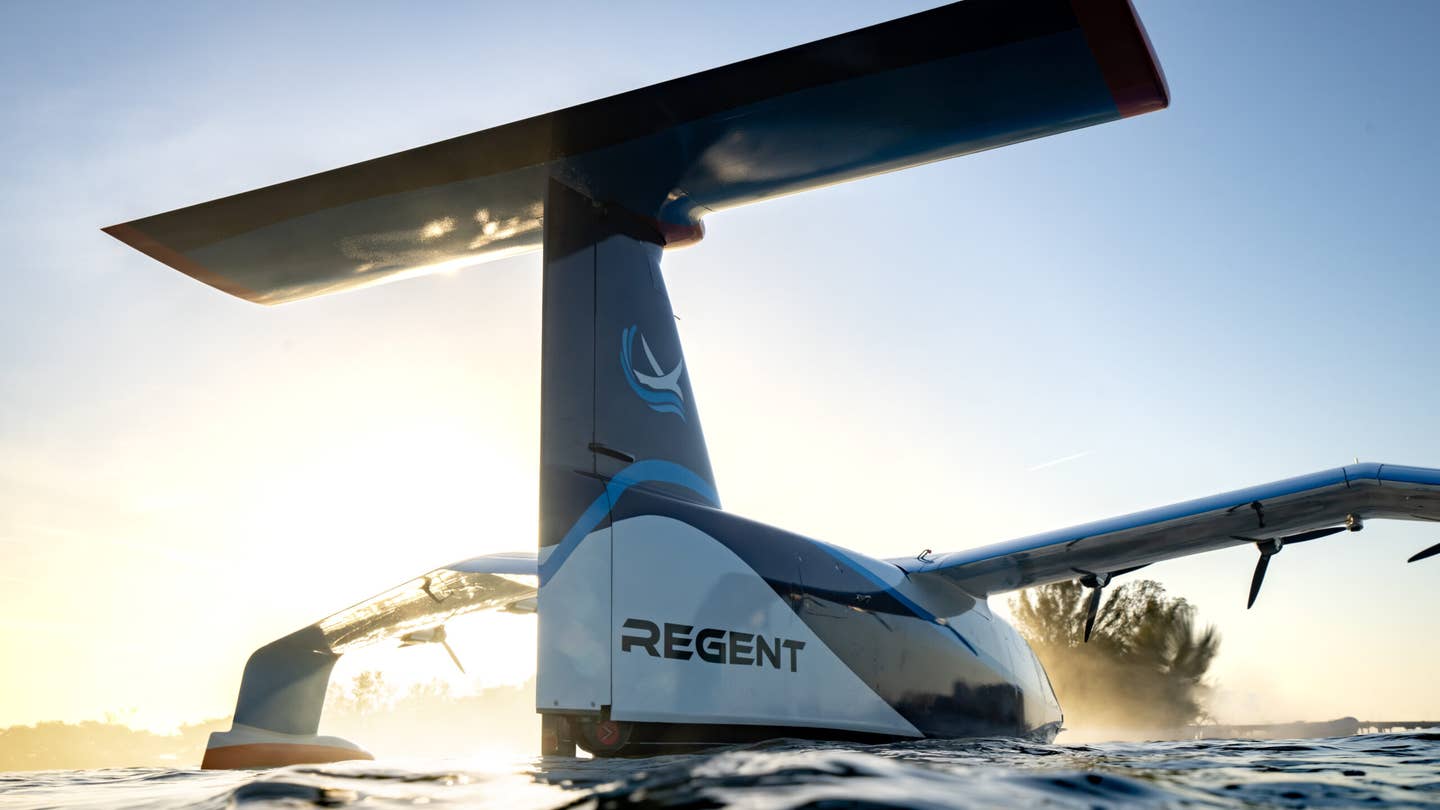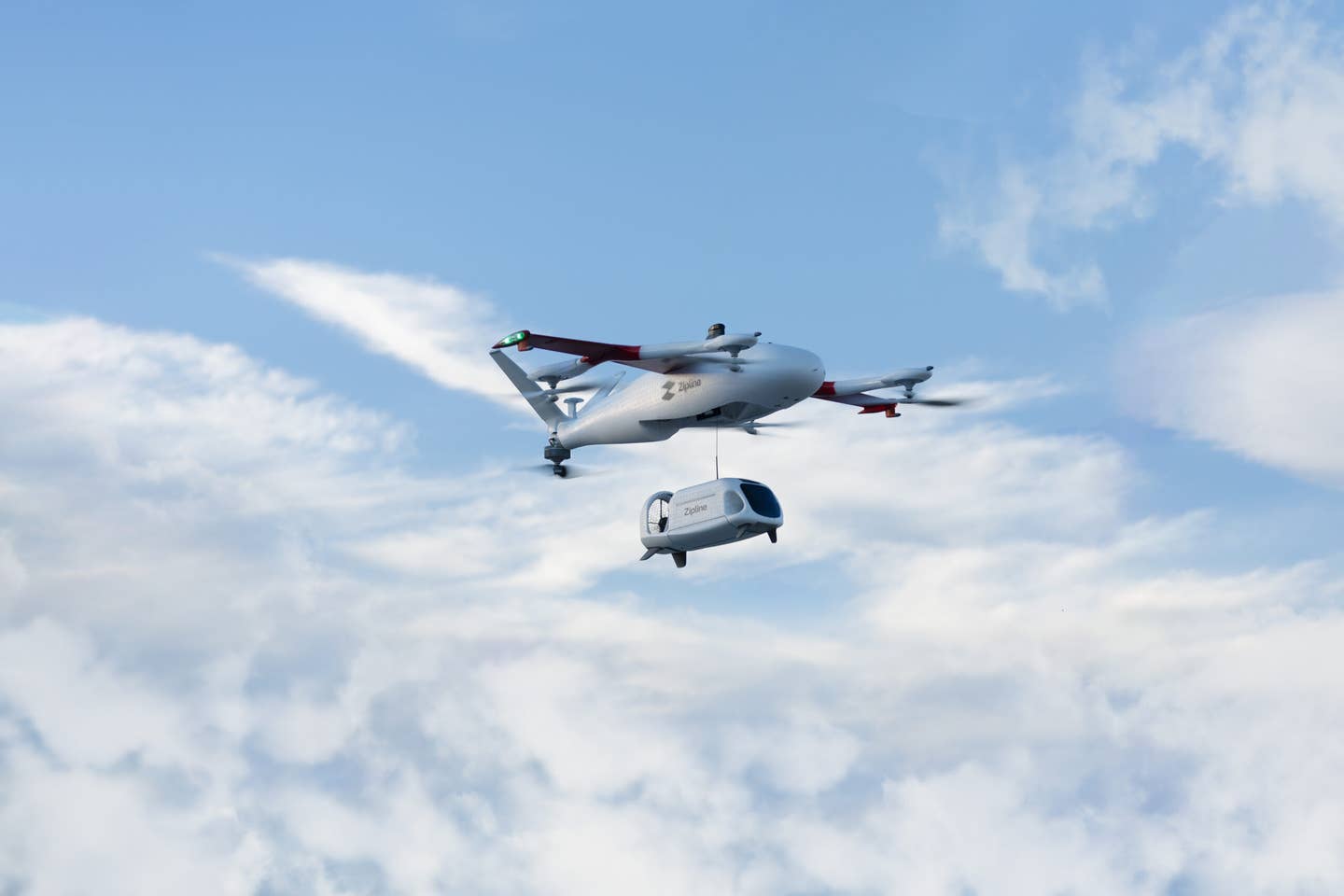Regent Begins Assembling Electric Seaglider Prototype for Crewed Testing
Company in the next few months will assemble the structural components for its flagship Viceroy aircraft, which is expected to begin crewed tests later this year.

Regent has already flown a quarter-scale prototype of its flagship Viceroy seaglider, but the company is gearing up to test a full-scale prototype. [Courtesy: Regent Craft]
BENTONVILLE, Arkansas—The world’s first electric seaglider is gearing up to fly humans for the first time later this year.
On Tuesday here at the 2024 UP.Summit, manufacturer Regent Craft announced that it has begun integrating the hardware and systems on its full-scale electric seaglider prototype, Viceroy. After receiving the all-clear to begin prototype testing from the U.S. Coast Guard last week, the company expects to begin crewed tests at sea before year’s end.
In the coming months, Regent will assemble Viceroy’s major structural components, including its motors, batteries, electronics and mechanical systems, and control software.
“We’ve proven seagliders can successfully float, foil, and fly—the integration phase is a major moment that brings us closer to experiencing float, foil, and fly firsthand,” said Billy Thalheimer, co-founder and CEO of Regent. “I’m looking forward to getting onboard myself.”
Viceroy is a zero-emission, 12-passenger design that flies in ground effect about 20 to 30 feet above the water, always remaining within one wingspan of the surface. And technically, it’s not an aircraft—rather, it is defined as a maritime vessel and will be regulated by the Coast Guard with FAA support.
Viceroy pilots will be maritime captains. In addition, the only controls on the vehicle are boat controls, with certain maneuvers such as landing augmented by a proprietary autonomous flight control system.
According to Regent, the idea is to merge the speed of an aircraft (Viceroy flies at 180 mph or 156 knots) with the functionality and low-cost operation of a boat. Forward and backward propulsion are generated by propellers, for example, but the vehicle will use existing dock infrastructure.
At launch, Viceroy will have a range of about 180 sm (156 nm), but according to Regent, that could grow to 500 sm (436 nm) as battery capacity improves.
Since announcing Viceroy in 2021, Regent successfully operated a quarter-scale prototype for 18 months and completed what it claims to be the world’s first electric seaglider flight in 2022. A full-scale mock-up of the design was unveiled in April 2023. In the past year, the company has been conducting aircraft subsystem tests, both physically and virtually using digital twinning software.
Those simulated tests will be validated by flights over Narragansett Bay and Rhode Island Sound, which the Coast Guard approved as testing locations for Viceroy. The campaign will gauge the aircraft’s ability to float, foil, and fly.
Regent says it has secured more than 600 orders for Viceroy, including from United Airlines collaborator Mesa Airlines and Southern Airways Express. Coastal passenger transport is the primary use case, but the firm is also exploring sightseeing, cargo delivery, offshore logistics, and maritime patrol. Investor Lockheed Martin is even eyeing it for defense applications.
Like this story? We think you'll also like the Future of FLYING newsletter sent every Thursday afternoon. Sign up now.

Sign-up for newsletters & special offers!
Get the latest FLYING stories & special offers delivered directly to your inbox






